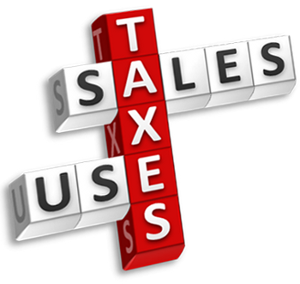The Top 5 Sales Tax Mistakes
Collecting sales tax can be complicated, no doubt about it. For small businesses, sales tax can be even more of a challenge because they probably have limited time and resources to devote to it, but they also can’t afford to make mistakes.
Oct. 06, 2016

Collecting sales tax can be complicated, no doubt about it. For small businesses, sales tax can be even more of a challenge because they probably have limited time and resources to devote to it, but they also can’t afford to make mistakes. Charging the wrong sales tax rate can not only increase the risk of audits, penalties or fines due to noncompliance, it can cause lost customers. So it’s important to get sales tax rates right as efficiently as possible. Here are some common pitfalls to watch out for.
- Getting nexus wrong
Nexus—your business’ relationship with a state that obligates you to collect sales tax—is the single most important thing you have to know when it comes to sales taxes. Your nexus will determine where you collect taxes. You must know where to collect before you can learn how much you need to charge, what to tax, what to exempt, etc. However, it’s often not that simple to figure out where to collect.
You probably know that you have to collect tax in the state where you’re based even if you have never heard the word “nexus”. This requirement comes from a 1992 ruling by the U.S. Supreme Court in Quill Corp v. North Dakota that held that states may require you to collect sales tax only if you have a physical presence (nexus) in a state.
However, in a world where states are trying to collect as much sales tax as possible, the possibilities for nexus are also increasing. Some nexus-creating situations include:
- Storing goods in another state
- Having employees work for you in another state
- Regularly attending trade shows or other events in jurisdictions outside your home base
- Drop shipping
- Advertising online or using affiliates to get business in other states (click-through nexus)
- Exceeding a threshold set by a state for the amount of sales to that state’s residents
Of course, just to make it even more complicated, each state has different rules about nexus. It’s crucial to carefully examine any possible nexus-creating situations that might apply to you.
- Using outdated tax rate information
Once you’ve figured out your nexus, the next step is figuring out the rate you need to collect. This information is readily available via tax rate tables and state revenue department websites. But beware of plugging in a rate and forgetting it: Rates change all the time. Lawmakers (state and local) like to tinker with sales tax rates, both across the board and for individual products and categories. It’s crucial to stay current with any updates so that you can be sure you’re charging the right rates for right now.
- Getting jurisdiction wrong
It’s common for businesses to use ZIP codes to determine what sales tax rate to charge, but this may not always give you the right results. Tax jurisdiction and ZIP code boundaries do not necessarily align, so one ZIP code can include more than one city or taxing jurisdiction and multiple sales tax rates. In Colorado, for example, the ZIP code 80111 includes at least five different sales tax rates.
The key to accurately identifying your jurisdictions is geolocation, pinpointing the correct location of the transaction using data such as latitude and longitude coordinates.
- Getting product taxability wrong
In order to collect sales tax at the right rate, you need to understand how your product is defined and taxed in the applicable jurisdiction. Is your product a good, a service, a digital object, or a combination of each? The correct definition is crucial to collecting the right sales tax rate.
Once again, definitions and rates vary widely among states. For example, while 65% of states have some definition of digital goods for sales tax purposes, some states answer the question of ‘what are digital goods?’ with precision, while some do not. Unfortunately, this inconsistency applies to objectively tangible goods as well.
- Missing exemptions
Sales tax exemptions are a boon for the buyer but can create challenges when you’re collecting sales tax. A wide variety of items can be exempt from sales tax, from food and clothing to computers and comic books, and definitions and rules are different for each state.
Then there are tax holidays, where certain products are exempt for a defined period of time, such as around the holidays or back-to-school time. You need to keep track of these in order to make sure you are charging the correct rate for the correct period of time.
Solutions for small businesses
Sales tax automation software, such as Avalara’s AvaTax, can be a lifesaver for small businesses struggling to keep up with all the details you are supposed to know in order to comply with sales tax rate rules. AvaTax integrates seamlessly into your accounting or shopping cart system, and special pricing plans make it an affordable option. It’s a solution that can make sales tax much more manageable for small businesses. Learn more.
———–
